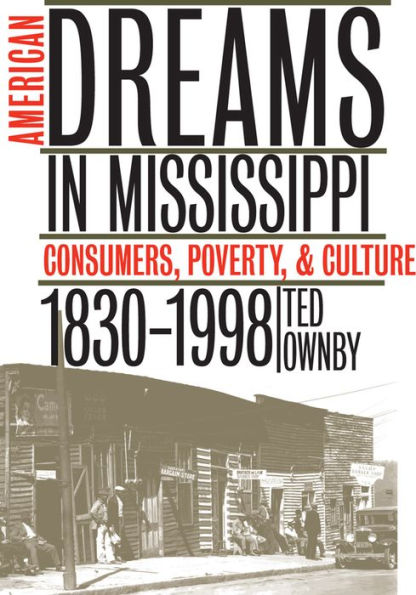Table of Contents
Contents
Acknowledgments Introduction Chapter One. Men Buying Cloth: The Limits of Shopping among Nineteenth-Century Farmers Chapter Two. Wealthy Men, Wealthy Women, and Slaves as Antebellum Consumers Chapter Three. You Don't Want Nothing: Goods, Plantation Labor, and the Meanings of Freedom, 1865-1920s Chapter Four. New Stores and New Shoppers, 1880-1930
Chapter Five. Gladys Smith, Dorothy Dickins, and Consumer Ideals for Women, 1920s-1950s Chapter Six. Goods, Migration, and the Blues, 1920s-1950s Chapter Seven. Percy, Wright, Faulkner, and Welty: Montgomery Ward Snopes and the Intellectual Challenges of Consumption Chapter Eight. White Christmas: Boycotts and the Meanings of Shopping, 1960-1990
Epilogue. A "Fine New Day"?
Notes Bibliography Index
Illustrations
Leigh's Chapel Store, Tipton County, Tennessee, early 1900s Dry goods store in Bolivar, Tennessee, 1913
Joseph Perlinsky, Canton, Mississippi Abroms New City Store, Rosedale, Mississippi, 1939
North Washington Street, Vicksburg, Mississippi, 1936
Good Hope Plantation, Mileston, Mississippi, 1939
Woman with a mail-order catalog, Washington County, Mississippi, 1937
Workers moving between Clarksdale and Greenville, 1938
The Hoffman 5 and 10 Cent Store, Greenville, Mississippi, 1905
Kew Mercantile, Wiggins, Mississippi The Woolworth store in Laurel, Mississippi Commerce Street, West Point, Mississippi, 1907
Quilters in a home near Pace, Mississippi, 1939
Woman in Hinds County, Mississippi, wearing clothing made from a fertilizer sack Juke joint outside Clarksdale, Mississippi, 1939
Robinson Motor Company, Clarksdale, Mississippi, 1939
Elderly couple in Madison County, Tennessee, 1910
Downtown Port Gibson, Mississippi, 1940
Tables
1. Accounts at General Stores, by Gender
2. Customers at General Stores, by Gender
3. Purchases Made by Sixty-seven Customers at the F. H. Campbell Store, Lodi, Mississippi, 1889-1891
4. Most Expensive Individual Purchases at Stores, 1831-1894
5. Spinning Wheels, Looms, and Spinning Machines Owned by People of Different Levels of Wealth in Nineteenth-century Mississippi
6. Methods of Payment at Rogers and Hearn Store, Jackson, Tennessee, 1859-1860
7. Amounts Paid in Cash by Slaves at Rogers and Hearn Store, 1859-1860
8. Fabric Purchases Made by Slaves at Rogers and Hearn Store, 1859-1860
9. Value of Hats Purchased by Slaves at Rogers and Hearn Store, 1859-1860
10. Visits by Slaves to Rogers and Hearn Store, March 1859-February 1860
11. Nonmusical Work Performed by Blues Musicians, 1910-1949



